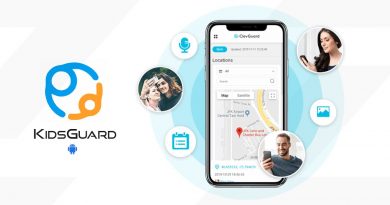User Activity Monitoring and Document Security
How we perceive user activity monitoring depends on the group that you belong to. For instance, there are two distinct categories in the world of user monitoring activities. These include:
- Individuals who monitor user activity. These are usually the creators of the content and hold the rights to how their documents are being used. Regarded as the smaller of the two groups, they may be more aware of document security than the others.
- Individuals whose activities are monitored. Typically everyone else falls into this category. This section has numerous myths regarding user activity monitoring.
In order to join the gap and help both categories understand the mechanics of document security and user activity monitoring, it is essential to look into the motives in monitoring user activity. Here we separate the myths from the facts.
Myth: Under the garb of data monitoring, my employer is tracking the amount of time I spend on social media.
Fact: User activity monitoring in documents or PDF files is only limited to the operation carried out in the document. Hence, it is unlikely that an employee is tracked on the amount of time spent on other activities. For instance, in digital rights management, a user is observed on the kind of activities they undertake on the shared document. If an organization has a security policy that prevents its employees from spending time in social media, they could block such sites. IT security professionals within the company are accountable for data security and hence may not look into your social life or aspects surrounding it. What the IT department is interested in is abnormal activity, such as sensitive or confidential documents being downloaded, copied content, forwarded documents to personal accounts, and the like. In almost every case, this is what the IT department keeps track of.
Read also: Computer spying software for windows that Help to Monitor Employees
Myth: I am always under scrutiny.
Fact: Only your activity on a specific document is recorded under digital rights management. This means you may be watched continuously while accessing a particular document. But, the moment you leave the document, data surveillance ends. The only time an employee may fall on the collective radar of the IT department is in the event of suspicious activity.
Myth: I can get away with anything.
Fact: Till a while ago, traditional security tools made the scenario likely. However, today technology systems such as digital rights management make the situation almost impossible. Unfortunately, some internal staff or third parties who are aware that their activity is being supervised may want to get away with unethical actions or illegal operations. In the absence of a robust digital management security system, they may succeed. But with the document DRM implemented, no suspicious activity can go undiscovered. In fact, it can be stopped before it takes place.
Myth: If the activity is being monitored, I have nothing to worry regarding document security.
Fact: This is implicitly incorrect. IT experts and researchers emphasize the significance of training employees on data security best practices. And these are not just for those in the IT department. Regardless of whether document security software is present, employees could download malware or make the mistake of transferring sensitive documents outside appropriate boundaries. The best way of addressing the rising number of data security breaches is in preventing them from taking place and educating employees on document access and use.
Read also: Best iPhone Monitoring App for Employer and Parents
Myth: Only the most significant companies implement user activity monitoring software.
Fact: Incorrect. Today, companies, both large and small, are beginning to view the importance of monitoring user activity on their documents. A large number of start-ups and medium-sized companies cannot afford the costs involved with a data security breach and the negative consequences that come with it. Document security today is not just for big players anymore. No company wants to experience loss of trust, compliance charges, and other financial impacts when it comes to a data breach.
Unfortunately, businesses have very little control over how they can monitor the day-to-day operations of every individual in their organization. But when it comes to critical and sensitive information, it is imperative to protect documents at all costs. Regardless of whether employees purposefully or erroneously misplace data, user activity monitoring can ensure that such incidents do not take place. Irresponsible behavior can make any documents vulnerable and at risk. At the same time, malicious insiders can compromise critical information on the lure of better prospects or money. To avoid both scenarios, critical data can be safeguarded with the help of digital rights management. Implementing document DRM can prevent mishaps from taking place intentionally or otherwise and further bolster the security of the organization in addition to various other document security measures in place.




